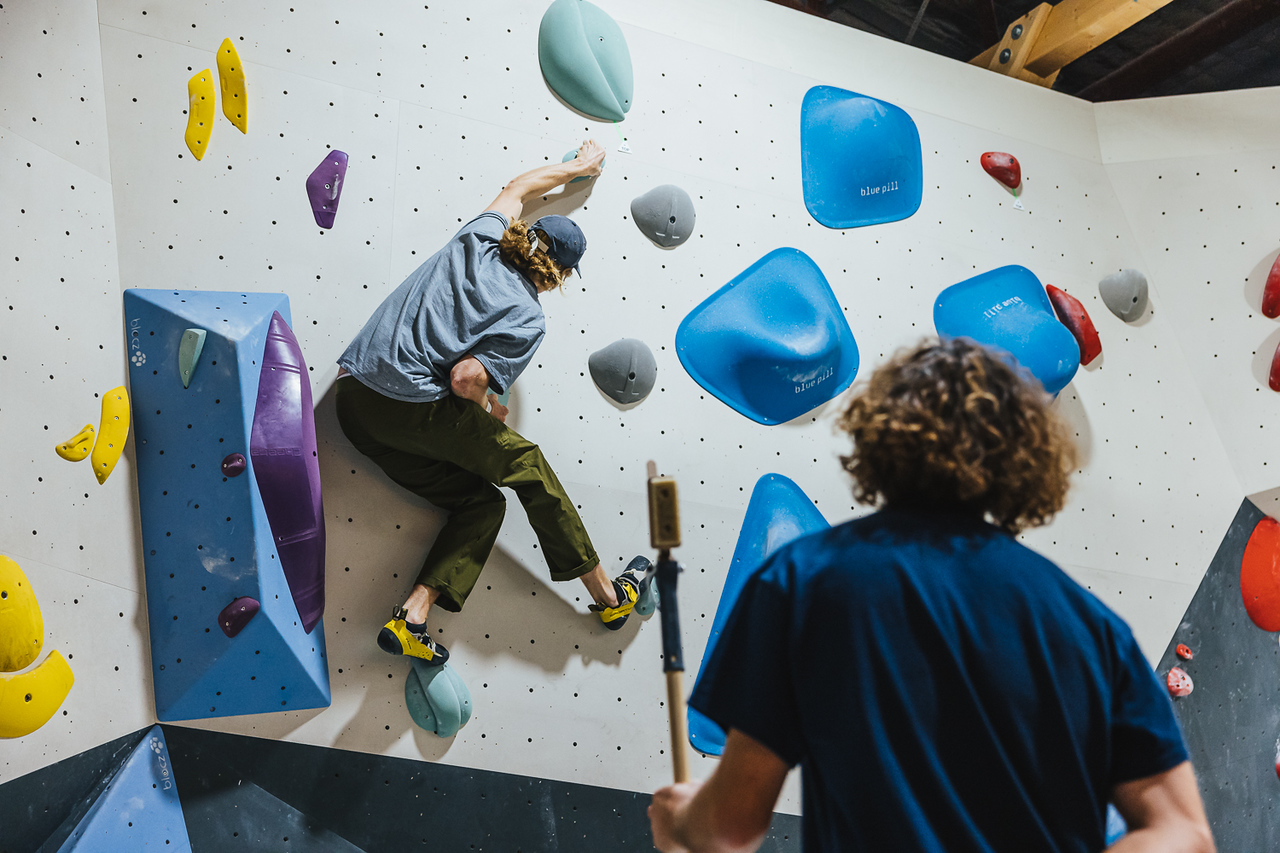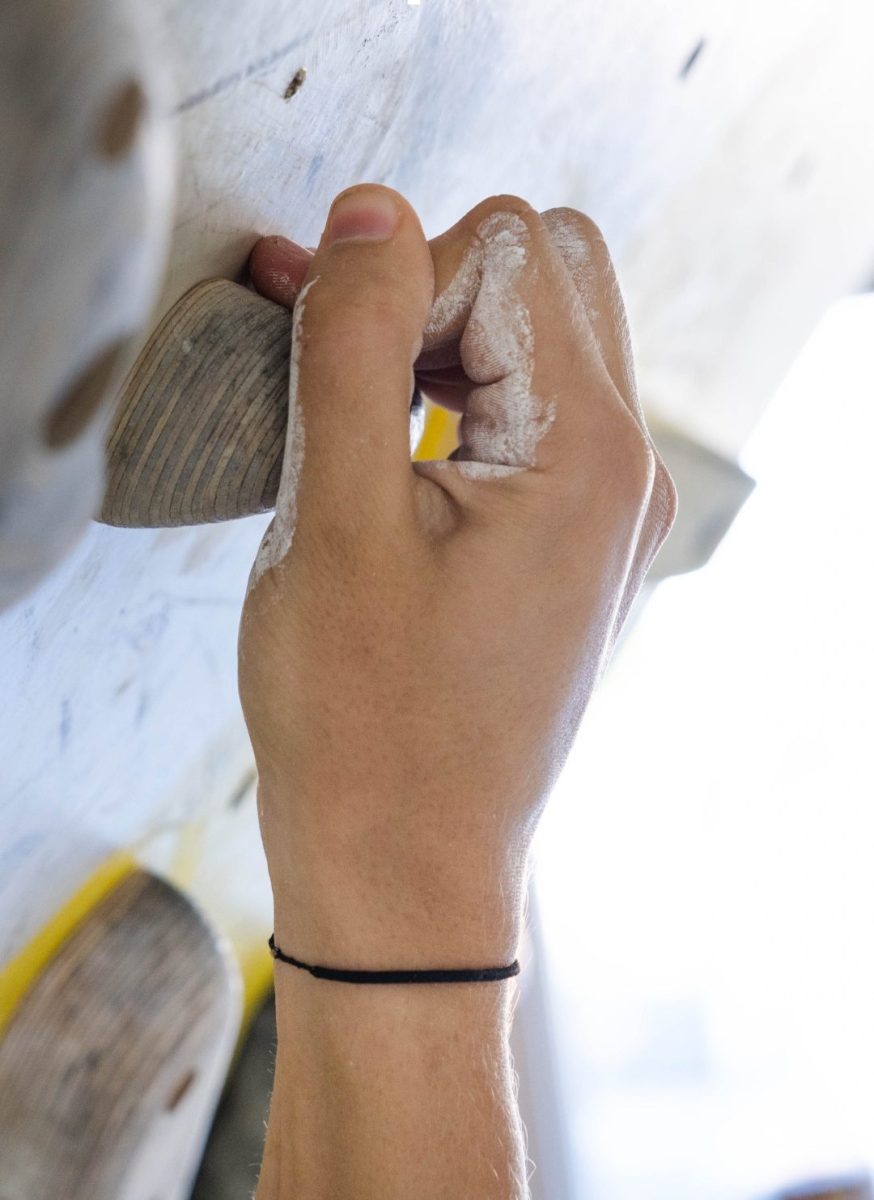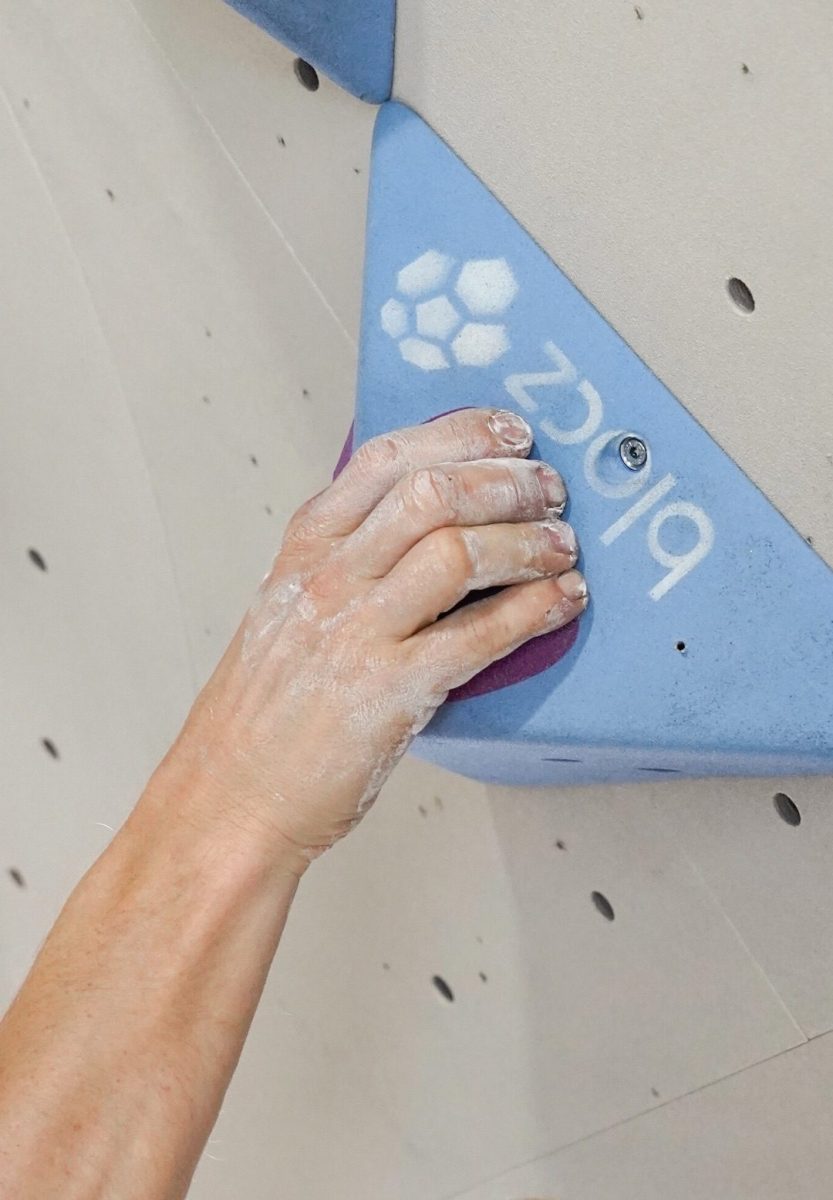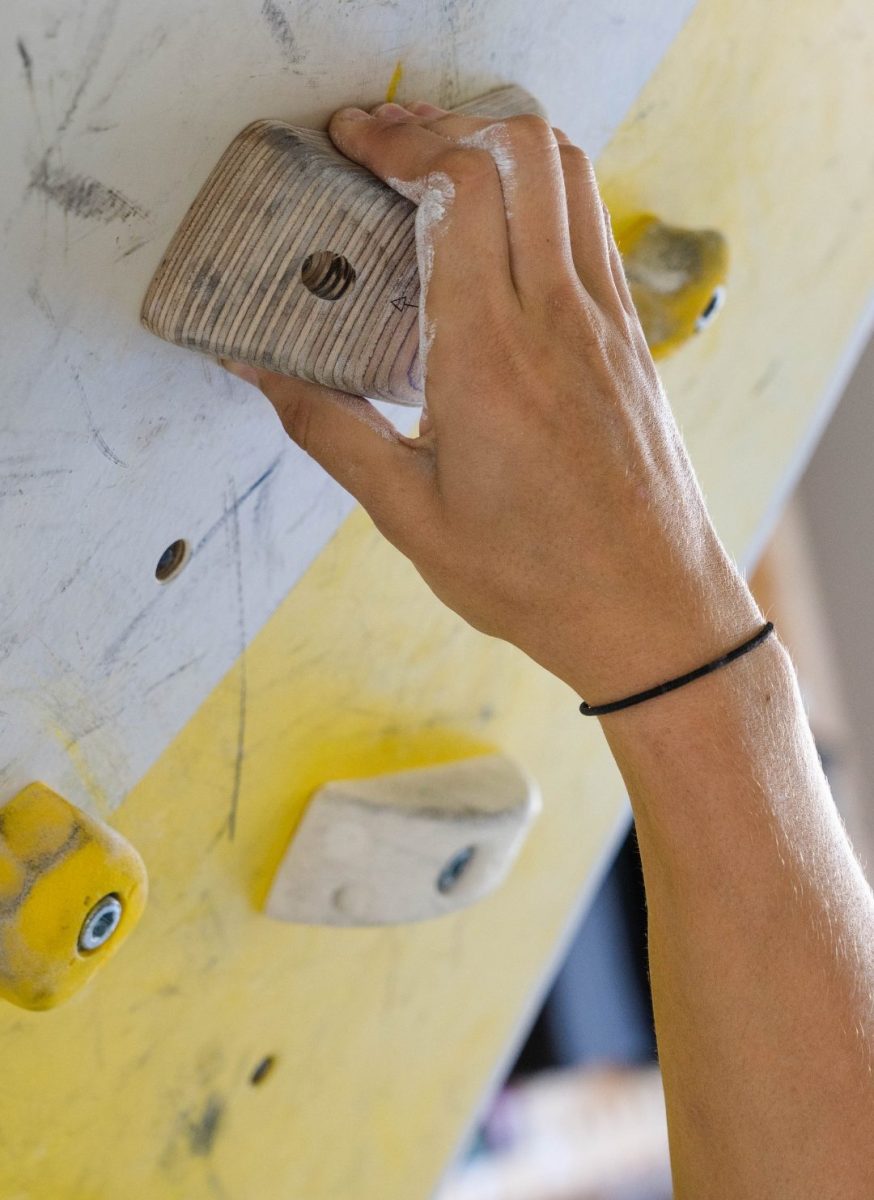6 Essential Climbing Grip Types

It’s no secret that our fingers work hard to keep us on the wall, whether that’s gripping tiny granite edges or pinching away on limestone tufas. From the ground it may look as if our fingers grip exclusively in one ‘vice-like’ position, but any advanced climber knows that they have a literal toolbox of grip-types at their fingertips.
It’s important that climbers experiment and train with a large range of grip positions, to build strength in these grips and become aware of when to use them. Differentiating grip-types can be intricate, but as a ‘rule of thumb’ (last one I promise!) we can split them up according to their (1) finger position and (2) Joint Angle.Finger Position – The positioning and engagement of fingers in a specific grip type that allows you to grip a hold with maximum efficiency.
- Joint Angle – This is the angle that the grip position creates at the finger joint, although this may vary from climber to climber (ie. Half Crimp = 90 Degree Joint Angle).
Obviously, a climber could simply choose one grip type and use that for all their climbing (and some do…). But to climb harder with greater efficiency and mechanical advantage, it is essential you implement and train a wide range of grip positions. Let’s have a look at 6 Basic Grip Types to get you started.
Half Crimp
Perhaps the ‘Pièce de résistance’ of climbing grips, the ‘Half-Crimp’ is the most versatile finger position, performing well on crimps, ledges and slopey holds. It is also quite simple, with all fingers bent at a 90-degree angle (the pinky finger may straighten slightly) and the thumbs disengaged to the side of the hand. This is the number one grip in terms of strength transfer to other grip positions, making it an effective and safe training staple.

Full Crimp (Closed)
The full-crimp is a powerful and aggressive grip position, that allows a climber to lock down on even the smallest of edges. It involves climbers wrapping the thumb over the index fingers and curling the fingers into a smaller joint angle. Using the thumb to lock the index finger onto a hold is effective, but this grip places high loads on finger joints and pulleys. Although the Full-Crimp is incredibly useful for small edges, it should be used cautiously to avoid injury and saved as a ‘Trump Card’ for those hard cruxy moves.

Open-Hand
For beginner climbers the Open-Hand grip may feel more comfortable, as it places less load on the pulleys and relies upon the finger’s natural structure. In this grip, the fingers are in an open position with a large joint angle (resembling an upside down “j”), enabling the palm to come close to the wall. This grip-type maximises friction by placing more skin in contact with the hold/rock, helping climber’s stick to slopers or hang off jugs effortlessly. The forearm muscles, responsible for grip, are less contracted in this position, making it more efficient for conserving energy and reducing ‘pump’.

Pinch Grip
As simple as it sounds, the Pinch Grip requires a climber to grab a hold between their fingers and thumb. By engaging the thumb against the hold, we can direct opposing force through the fingers and pinch even the worst holds. If you’ve been climbing for even a short time, we can guarantee you’ve come across a pinch that was too wide, thin or slopey for you to hold. To develop vice-like pinch strength a climber should focus on targeting the muscles in the palm and forearm responsible for “Thumb Force”. A pinch block is an invaluable tool for training this grip type, and allows you to easily measure improvements in pinch strength.

Three-Finger Drag
Once mastered, the 3-Finger drag will likely become a staple in your climbing, allowing you to hold onto sloped edges with maximum efficiency. The grip involves a climber elongating their index, middle and ring finger into an open-hand (or ‘Drag’) position to hold an edge. This grip type is more passive – relying upon friction instead of brute force – as the forearm flexor muscles are less contracted. As this grip type is more efficient at conserving energy and utilizing friction, many climbers will alternate this grip type into their climbing on long endurance routes. Lastly, strengthening the 3-finger drag for climbing will reduce the risk of injuries associated with the pinky finger slipping off and overloading the other fingers.

Mono & Two-Finger Pockets
Often seen as the most advanced grip position, small pockets place incredibly high loads through the pulleys and tendons of the fingers. Oftentimes a tiny pocket is the key to sending a project or linking a sequence, so it’s essential climbers understand the mechanics of this grip type. Sometimes we will come across small openings in the rock that are just big enough for 1 (a mono) or 2 fingers, these are called ‘pockets’. To hold them, a climber must insert 1-2 fingers into the pocket and pull down in an open-hand position, usually with the remaining fingers close to the palm. The combination of an extended finger position and reduction of fingers in contact with the rock culminate in high injury rates within this grip position. So it’s vital climbers practice using this grip type and engage in gradual hangboard training to strengthen their tendons for pocket-pulling.
To be honest, there are an almost limitless amount of grip-types and variations climbers can employ when on the wall. The key is to use and train on a variety of finger positions, to expand your understanding of where each is useful. The correct grip-type, with good technique and strength, can improve bad holds, increase a climber’s endurance and help you send your project!
Have any questions about rock climbing, training or equipment? Ask our friendly and knowledgeable staff at Alpine Indoor Climbing or reach us at @alpineindoorclimbing.
We’d love to help!